Toxin-free through the day: how to minimize your exposure to harmful substances
Imagine starting your day as usual: with a cup of coffee, a quick shower and perhaps a quick breakfast before heading off to work or university. What if I told you that these everyday rituals can contain harmful substances and chemicals that can endanger your health?
Pollutants and their effects on your health
From the pesticides in our food to the chemicals in our cosmetics, pollutants are omnipresent in our lives. Our homes are not immune to this either, as potential toxins are hidden in cleaning products, plastics and even in the furniture we surround ourselves with. Recognizing these sources is important in order to take measures to reduce your exposure.
Harmful substances in food
Our diet plays a central role in our exposure to various pollutants. From natural toxins in plants and animals to pesticide residues and additives in processed foods – the sources are many and varied. However, a conscious approach to these dangers can help to minimize the risk.
Natural contaminants in food
Many plants produce natural toxins as protection against pests and diseases. Solanine in green potatoes and lectins in raw pulses are examples of natural toxins that can cause health problems if not stored or prepared properly. Proper storage and thorough cooking are simple measures to reduce the risk from these natural toxins.
Mycotoxins, which can be produced by molds on foods such as nuts, grains and fruit, are also a classic example of natural pollutants. Damaged or rotten parts of fruit and vegetables should therefore always be removed thoroughly or disposed of completely.
Preparation methods that form harmful substances
The way we prepare food can also influence the formation of harmful substances. For example, the preparation of starchy foods at high temperatures, such as deep-frying, can form acrylamide, a chemical that is suspected of being carcinogenic. Alternative cooking methods, such as steaming or braising, can minimize the formation of these harmful compounds. This chemical is also formed during the coffee roasting process(1). Maybe that’s an argument for you to switch from roasted beans to the healthier matcha?
Pesticide residues and heavy metals in food
Pesticide residues (e.g. glyphosate) in conventionally grown fruit and vegetables and heavy metals in fish products are further sources of harmful substances in our food. Regular intake of even small amounts of these chemicals can have long-term health effects, including cancer, hormone disruption and negative effects on the nervous system. The Environmental Working Group has defined the so-called “Dirty Dozen”, i.e. the types of fruit and vegetables that contain the most residues from conventional agriculture and should therefore definitely be bought in organic quality, as these are grown without the use of synthetic pesticides. The consumption of fish from sustainable catches generally has lower concentrations of heavy metals than fish from conventional catches.
Additives in processed foods
Processed foods often contain additives such as preservatives, colorants and artificial flavors, which can be toxic in high doses. Although additives are subject to strict regulation, there are concerns about the long-term health effects of some synthetic additives. A well-known example is the nitrite in curing salt, which is used in sausage products and forms nitrosamines when it reacts with meat proteins, which can be carcinogenic. Choosing fresh or minimally processed foods helps to reduce the intake of such chemicals.
Gaps in protection due to pollutant limits
Regulatory authorities do set limits for contaminant levels in conventionally produced foods, but these vary depending on the type of food and are not set for all products. This means that foods with high levels of harmful substances that are not specifically limited may still be sold. Although foods that are theoretically hazardous to health are not marketable, there is no legal enforcement mechanism. A loophole in the system that endangers us all! You can find good information on the subject of harmful substances and food safety on the Foodwatch website.
Harmful substances in food supplements
Food supplements are an integral part of daily life for many people, supplementing their diet and promoting their general well-being. But despite their health benefits, they can also be sources of harmful substances. The problems range from the questionable chemicals from which they are sometimes made to the use of problematic additives and pesticide contamination that can occur in natural supplements from conventional cultivation.
Synthetically produced vitamins and minerals
Many synthetic vitamins are produced using chemicals and solvents. Tar or formaldehyde is often involved. These toxic substances can harm your body even in the smallest doses if you take them every day.
You can always recognize synthetic vitamins by their chemical name on the list of ingredients. With natural vitamins, on the other hand, you won’t find any vitamins or even the word “vitamin” in the list of ingredients. By law, the herbal raw materials (e.g. Amla extract) must be listed here instead. This makes it easy for you to recognize synthetic products!
Problematic additives
An additive found in many food supplements is magnesium stearate, a flow agent that facilitates the production of tablets and capsules. Some studies suggest that, if consumed in excess, it could promote inflammation and hinder the absorption of nutrients. Some supplements also use synthetic dyes and flavors that can trigger allergic reactions or other health problems. Always read the list of ingredients carefully before buying and avoid such products.
Pesticide exposure
Unfortunately, natural food supplements from conventional cultivation are not free of risks. These may contain pollutants and therefore chemicals in accordance with the legal limits. But even small amounts of pesticides and other pollutants ingested daily can accumulate in the body and lead to chronic health problems.
Organic food supplements as a solution
Organic supplements offer the only healthy solution to the problems associated with conventional food supplements. These are subject to stricter guidelines. Organic products may not contain any synthetic pesticides, fertilizers or genetically modified organisms (GMOs). This makes organic supplements, like the ones we offer at Ogaenics, a safer choice for you. Incidentally, organic ingredients must always be marked with an asterisk and contain the footnote “from controlled organic cultivation” on the list of ingredients. Only organic products that contain at least 95% pure organic ingredients may bear the organic logo.
-
Bestseller
Calm A Lama
Rated 4.86 out of 5Plant-based organic magnesium from premium organic green algae extract for muscles and nerves44,90 €1.076,74 € / kg
-
Mr Do-It-All 18+
Rated 4.66 out of 5Organic Multivitamin Complex Premium for men between 18 and 44, All-In-One79,90 €2.069,95 € / kg
-
Bestseller
Mrs Do-It-All 18+
Rated 4.84 out of 5Organic Multivitamin Complex Premium for women of fertile age, All-In-One!79,90 €2.302,59 € / kg
-
Bestseller
Oilalala
Rated 4.80 out of 5Bio Skin Omega Complex for moisturizing skin and mucous membranes with omega 3-6-7-9 and vitamin A49,90 €1.397,76 € / kg
Harmful substances in everyday products
Everyday household items, from cleaning products to personal care products, can also be sources of synthetic chemicals that can harm your health. If we choose our products carefully, we can significantly reduce our exposure to these pollutants.
Household cleaner
Many household cleaners contain harsh chemicals that can cause skin irritation, respiratory problems and other health complaints. One specific example is bleaching agents containing chlorine, which can release potentially hazardous vapors when used in poorly ventilated rooms. It is better to use natural cleaning agents based on vinegar, citric acid or soda, which are less toxic options for household cleaning.
Cosmetics and body care products
Our skin is not an impermeable barrier. Chemicals in cosmetics can be absorbed into our bodies through the skin, which can lead to health risks. Avoid products in plastic to reduce exposure to microplastics. Check the ingredients list for parabens and phthalates. They are suspected of causing hormonal disorders. For example, parabens used as preservatives can mimic hormone function and increase the risk of certain types of cancer. Also beware of any form of fragrance on the ingredients list. Phthalates are also often hidden behind these, but they do not have to be clearly labeled. Greenwashing danger! What else you need to pay particular attention to:
Danger of inhalation:
Aerosolized products such as sprays, powders and fragrances can release toxic chemicals into the air that we breathe in. They enter the bloodstream particularly quickly and easily via the lungs. Avoid such products wherever possible or buy them “clean”.
Eyes
Cosmetics applied close to the eyes can lead to direct contact with chemicals. Some ingredients, such as formaldehyde-releasing compounds or irritants, may cause eye irritation or other harmful effects. It is therefore better to choose good natural cosmetic products as an alternative for the eyes.
Oral intake
Lipsticks, lip balms and other products that can come into contact with the mouth are ingested when eating and drinking. They should therefore always be “non-toxic”.
Plastic products and food packaging
Microplastics, bisphenol A (BPA) and bisphenol S (BPS) are chemicals that are problematic in plastic products and packaging. Here are the main sources of these chemicals that you should avoid:
Disposable coffee cup
“To-go coffee cups are a major source of microplastics. How often do you use them? Although they are made of paper on the outside, these cups are lined with a thin layer of plastic on the inside to prevent the paper from getting soaked. When we pour hot liquid into these cups, the plastic can migrate into our drink.
The “BPA-free” danger
When it comes to plastic materials, be particularly wary of the words “BPA-free” – this may sound positive at first, but unfortunately it often just means that BPA has been replaced by another harmful material. This is often the – also toxic – BPS. It has been proven that BPS is more toxic to the reproductive system than BPA and promotes certain types of breast cancer hormonally just as strongly as BPA. Unfortunately, it has not yet been regulated in the EU.
Danger in the receipt
61% of all thermal paper in the EU is based on bisphenol S (BPS), which is used for till receipts. It enters the body through skin contact. The only exception to the rule: blue thermal paper, which is used in some organic food stores and supermarkets, is harmless to health. So pay attention to this and always think carefully about whether you want to be given a receipt.
Microplastics in water bottles
A new study has also revealed that plastic bottles can contain 100-1000 times more microscopic plastic particles than previously thought. Bottled water contains toxic contaminants such as heavy metals, radioactive particles, endocrine disruptors and microplastics, to name but a few. Sun, heat and mechanical stress increase the leaching of microplastics in bottled water. In addition, heavy metals are deposited in the water when it is exposed to sunlight. (1, 2, 3, 4)
Therefore, always choose products with glass packaging over anything else.(1) Also, filter your drinking water, fill it into a glass or stainless steel bottle and avoid plastic bottled water as much as possible. This not only reduces your pollution, but also prevents plastic waste from polluting our planet.
PFAS chemicals
PFAS (per- and polyfluorinated alkyl substances) are a group of chemical compounds known for their water-, grease- and dirt-repellent properties. They are widely used in a variety of products, including non-stick cookware, water-repellent clothing, food packaging materials, fire-fighting foams and some industrial processes.
PFAS are of particular concern because they are very persistent, can accumulate in the environment and in the human body and are only broken down very slowly, which is why they are also referred to as “eternal chemicals”. Exposure to certain PFAS has been linked to various health problems, including an increased risk of certain cancers, hormone disruption, immunodeficiency and developmental delays in children. Look out for terms such as “water-repellent”, “dirt-repellent”, “grease-repellent” or “non-stick”. They are also hidden in cosmetics as “long-lasting” or “waterproof”, e.g. in mascara. Such properties may indicate the use of PFAS, especially in cookware, clothing, carpets and furniture.
Indoor air pollution
Indoor air quality is often more polluted than outdoor air. Inhaling harmful substances is almost as dangerous as injecting them directly into your body. This is because the fine membranes of your lungs allow toxins to pass quickly into your blood and brain.
Especially at home, you can easily expose yourself to toxins, especially if you are often indoors. This is due to a variety of sources, including furniture, carpets and paints, which can emit potentially toxic volatile organic compounds (VOCs).
Here’s what you can do to improve the air quality at home:
- Avoid burning materials: Avoid using candles, incense, cigarettes, water pipes or vapes, as they all produce harmful smoke.
- Use the extractor hood when cooking: Cooking releases volatile organic compounds (VOCs), which ensure that we can smell the food. These pollutants are also produced when oil is heated too much.
- Open your windows daily for fresh air, even in winter, and have your ventilation systems professionally cleaned regularly.
- Avoid aerosols: Anything you spray can be inhaled. Products such as dry shampoos often contain butane, which has already led to deaths.
- Furniture materials such as MDF, chipboard and plywood can release formaldehyde. Make sure you choose furniture that has particularly low formaldehyde emissions.
This can all help to improve the air quality in your home and reduce the risk of health problems.
Electronic devices
Electronic devices, including cell phones, computers and televisions, can contain heavy metals and flame retardants that are potentially harmful. While direct exposure to these substances is generally low, they can enter the environment during recycling or improper disposal and cause health problems. Responsible disposal and recycling of electronic waste can help to minimize these risks.
Conclusion
Do you feel overwhelmed by all the things that are important for a less polluting life? No need to worry! It is important that you become aware of the sources of harmful substances and make conscious decisions whenever possible. If you focus on making healthier choices 80% of the time and give yourself some leeway in the remaining 20%, you’ll create a balanced foundation for a health-conscious life. It’s about a healthier life, not perfection. Stay healthy!
THIS MIGHT INTEREST YOU:
Ständig müde? Vielleicht flüstert deine Leber um Hilfe


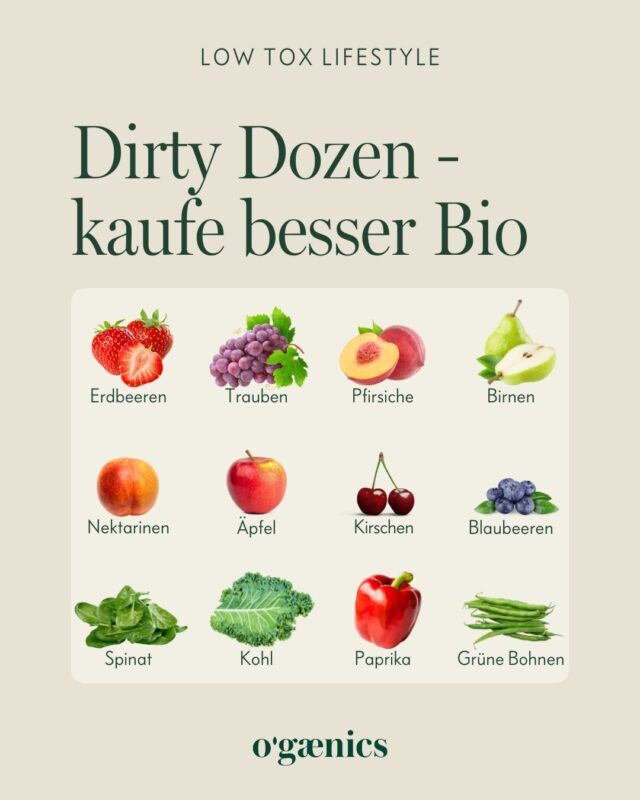
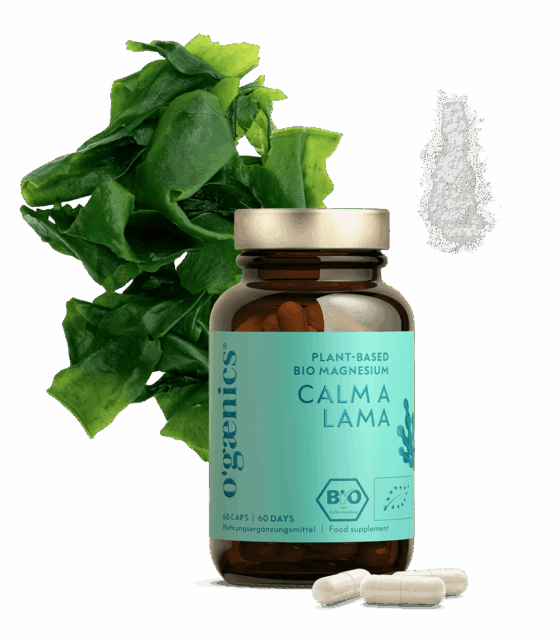

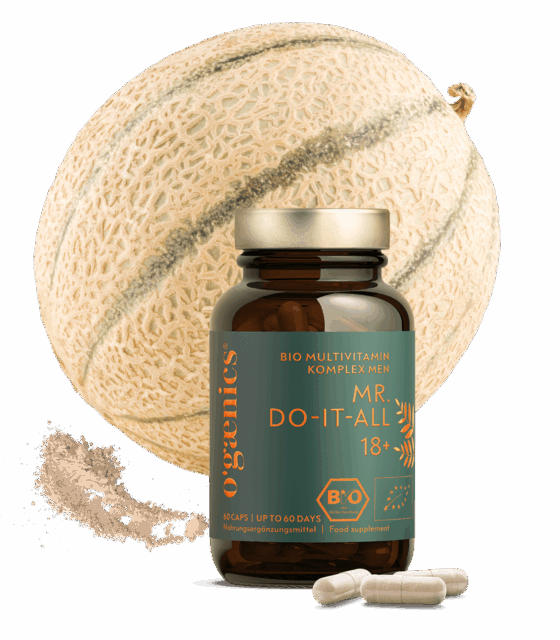
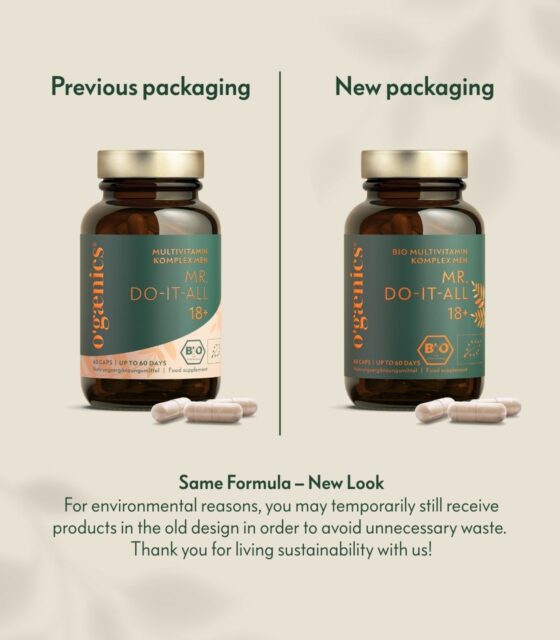
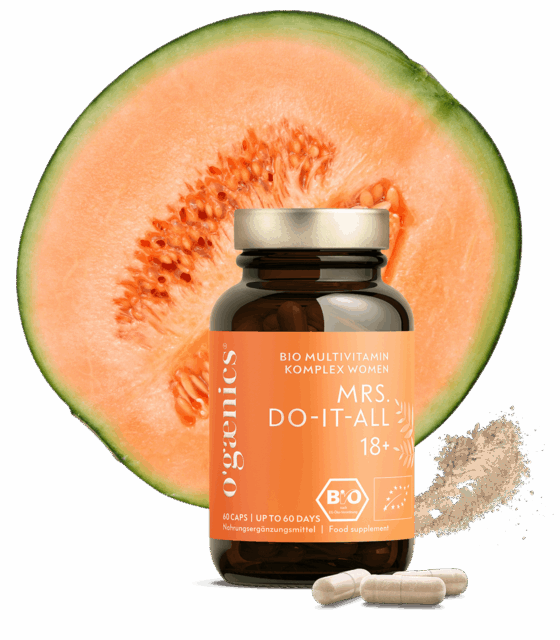
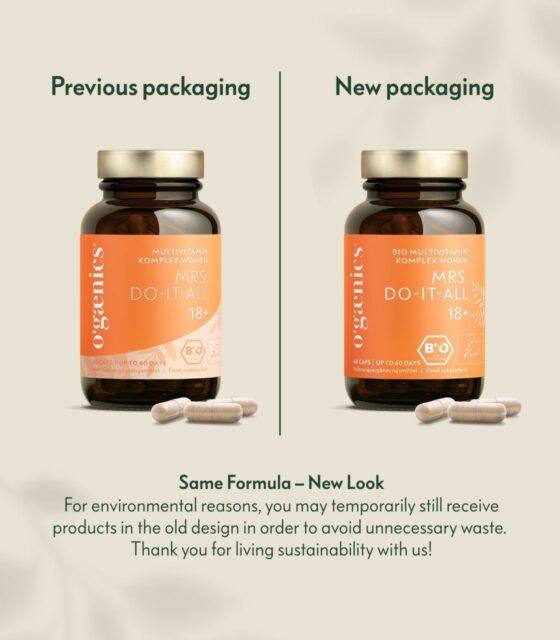
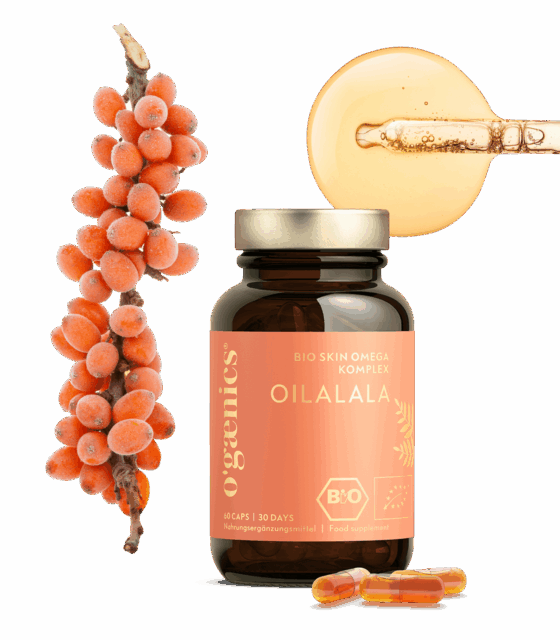
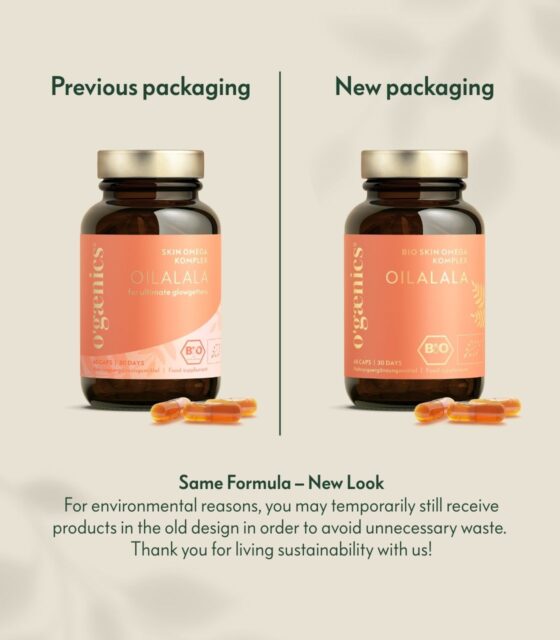

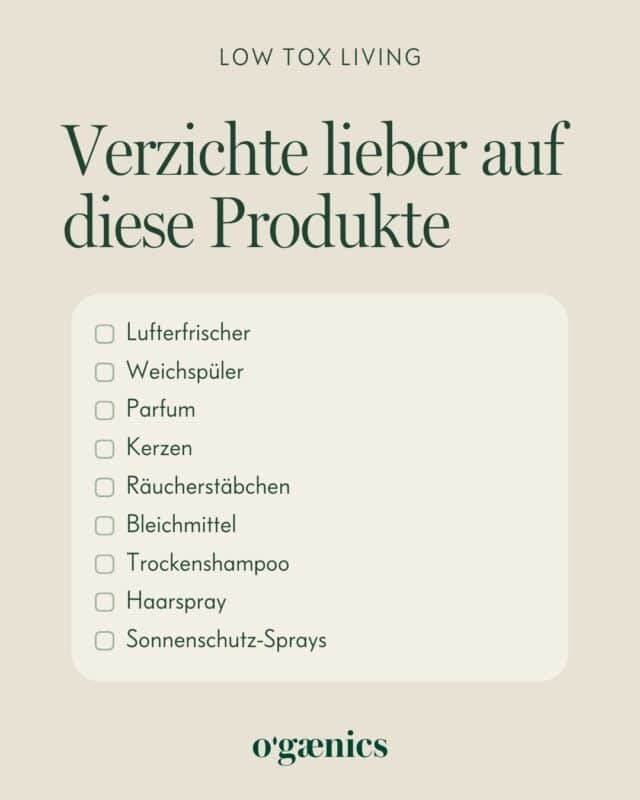



 No products in the cart.
No products in the cart.